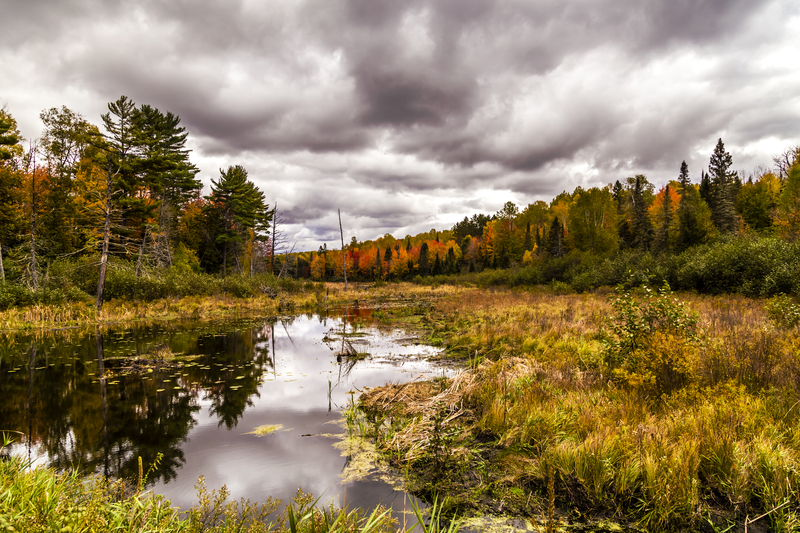Thanks to our ancestors, these weather-predicting methods below can provide us with signs of rain, snow and other events. Some of them may even sound familiar to you. Another great thing about these tips and tricks is that they require little skill. If you memorize them or write them down, you should be all set!
Bubbles in your coffee
Pour a cup of coffee into a mug and watch the bubbles form. If they move rapidly to the cup’s edge, expect good weather. But if the bubbles stay in the mug’s center, clouds and rain could be on the way.
High pressure pushes the bubbles to the edge, and high pressure is an indicator of good weather.
Use your body
Arthritis pain and physical discomfort kick in when the barometric pressure changes.
Sinus and facial pain caused by changes in the barometric pressure can also be an indicator that precipitation is coming. Headaches can also indicate other weather conditions such as extremely hot or cold temperatures and high winds.
The animals know
When the barometric pressure drops, flying at great heights becomes difficult for birds. The pressure drop is also believed to hurt birds’ ears, prompting them to fly at a lower altitude.
Counting the number of times a cricket chirps can be a surprisingly accurate means to determine the temperature, because a cricket’s metabolism changes as the temperature changes.
Anyone who has lived near farmland has heard the notion that if cows are lying on the grass, rain is coming. Some experts theorize that cows sense those changes and lie down so they are positioned on a dry spot of grass before the storm begins.
If you can’t hear the sounds of cicadas when they’re normally causing a racket, it could mean that rain is coming.
Have you heard this old saying about horses?
Tails pointing west, weather’s at its best; Tails pointing east: weather is least.
Turns out, animals tend to graze with their rear ends pointed toward the wind. Don’t we all? A westerly wind usually indicates good weather, while an easterly wind sometimes means bad weather is approaching.
Scientists surmise that ground dwelling animals can sense a chemical change in the groundwater caused by rocks in the Earth’s crust releasing charged particles. The disturbance can lead them to seek safer havens.
Look up
Red sky at night, sailor’s delight; Red sky in the morn, sailors take warn.
A red sky at sunset will most likely result in beautiful clear skies, indicating that high pressure will keep the storms at bay.
If the sky is red in the morning, the sunlight from the east could be revealing moisture in the air, indicating that a storm is coming from the west.
A Ring Around the Moon, Rain or Snow Is Coming Soon
The visible ring sometimes appearing around the sun or the moon is a result of ice crystals in cirrus clouds refracting the light off these celestial bodies. Since cirrus clouds generally indicate foul weather to come, you can assume that it is time to start waterproofing.
Layers of clouds moving in different directions (east and north, for example) indicate that severe weather could be on the way. When cloud layers start moving in different directions, it means an area of low pressure is nearby, and that often leads to clouds and rain.
Rainbows in the Morning Give You Fair Warning
A rainbow in the west in the early morning hours could mean the sunlight from the east is striking moisture. Moisture could indicate a storm is approaching
If the easterly winds grow suddenly strong, it can be an indicator of a shift in barometric pressure, another sign that a storm is approaching.
When clouds appear like rocks and towers,
The Earth’s refreshed by frequent showers.
Tower clouds, or cumulonimbus, as they’re known scientifically, can indicate that severe weather is approaching.
I can feel it comin’ in the air tonight (cue Phil Collins)
Easterly winds can indicate a storm front is moving in, while winds blowing west mean good weather.
The nose always knows. Prior to a storm it’s possible to smell the scent of ozone, a sweet odor, being carried to lower altitudes. Meanwhile, during a low pressure system and rain, molecules from decomposing plant matter are released from the surfaces they’ve attached to, such as soils, and often smell like compost, which can also indicate rain.
Flowers smell best just before a rain.
When ditch and pond offend the nose, Look for rain and stormy blows.
Unfortunately, it’s not rosy all the time; it is believed that the smells of swamps and marshes are held down near the surface when atmospheric pressure is high, but low atmospheric pressure allows these foul odors to rise and carry.
Smoke gets in your eyes
Chimney smoke descends, Our nice weather ends.
If the smoke rises in a straight stack, you can anticipate fair weather to come. If the smoke rises in a stack as normal, but appears to be buffeted downwards once it reaches a certain height, you can bet that a storm’s a-brewin’.
The Barometer
Basically, a barometer tells if there is high pressure which indicates lovely weather abounds, however low pressure will signal wet weather is around the corner.
Most barometers are aneroid barometers and contain zero liquid. They do, however, contain a spring which is calibrated using a dial or knob located in the back. To calibrate properly, go to http://www.weather.gov/ to get your local weather. It should include the current barometric pressure and you should adjust your barometer accordingly.
Have you used any of these methods to predict weather? Let us know if you have any other suggestions!
Article Source: The Prepper Journal
